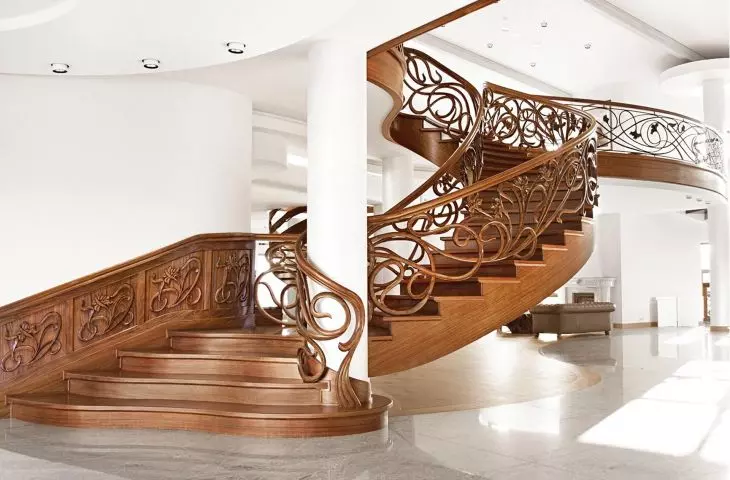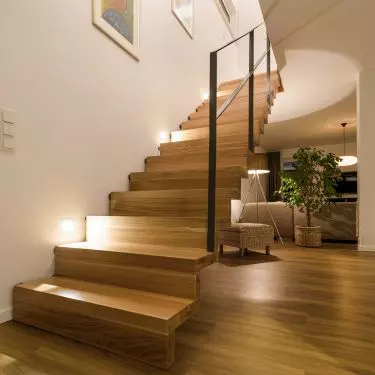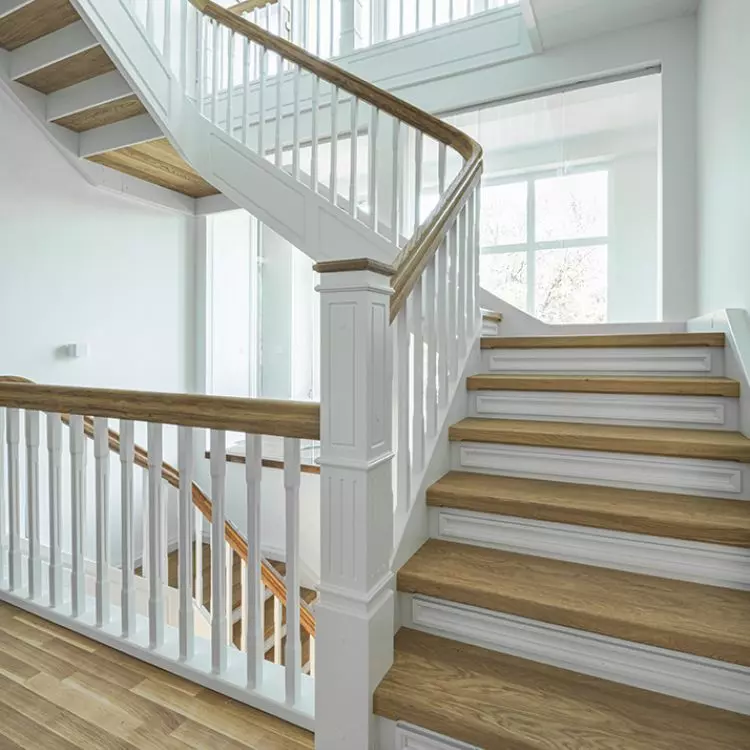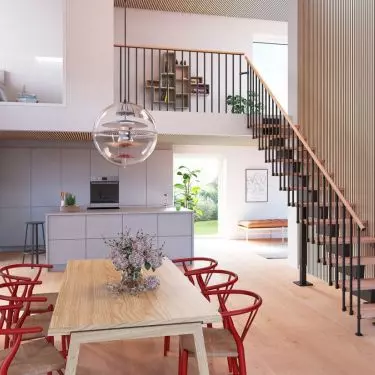Choosing the right interior staircase can be a key aspect of interior design and renovation, affecting aesthetics, functionality and safety of use. In this article, we'll look at the most important factors to consider when choosing an interior staircase. We will discuss the different types of stairs available on the market, their advantages and limitations, as well as how to match the right design to individual needs and preferences. As you read on, you will learn what to look for when making this important choice.
Choosing an interior staircase
Where to buy an interior staircase?
A reputable manufacturer of stairs guarantees high quality workmanship and the use of the best materials. Thanks to this, we can be sure that the stairs will be solid, durable and safe for use for many years. One such manufacturer is the Marchewka company. It is also worth checking the offer of brands such as Atrium, Mahoń and Dolle. Before making a decision, it is worth reading the opinions of other customers and consulting a professional.The full list of recommended manufacturers can be found in the search engine of the portal Products for Home under the keyword "stairs".
You can choose from straight stairs, spiral stairs, millwork stairs, stairs with reverses, double flights and modular stairs.
© Mahoń
Types of interior stairs
Straight stairs
The simplest type of staircase, consisting of a single flight, with no branching or landings.
Winding stairs (ascending)
This type of staircase has winding treads that allow the staircase to turn 90 or 180 degrees. They can be in the form of an "L" or "U" letter.
Spiral staircase
This is a staircase that spirals around a central column. They are popular for their elegant appearance and space-saving design. However, they may be less practical for everyday use.
Mill stairs
A mill staircase is a type of very simple staircase that resembles a ladder inclined at an angle and is equipped with a handrail. The name "miller's" was taken from mills, where this type of solution was originally used.
Stairs with reverses
These stairs are placed in a small area, often leading to half floors. They have steep steps that are reversed, i.e. the wider edge is at the bottom and the narrower edge is at the top.
Stairs with two flights (double)
This type of staircase consists of two flights connected by a platform in the middle. They are more convenient, especially compared to straight stairs.
Stairs with shelves
This type of staircase has small separated steps, similar to shelves, which give it a unique look.
Open stairs
This is a staircase without treads, which adds spaciousness and lightness to the interior. They have only the treads themselves, with no closure between them.
Stairs with treads (in two flights)
This is a type of staircase that combines treads of different depths, which allows a smooth transition between them.
Modular stairs
Modular stairs are ready-made sets that can be easily assembled and disassembled. This is ideal for those who are looking for mobile or temporary solutions.
Popular materials for stairs include wood, concrete, metal, stone, glass, laminates or wood-like panels.
© Mahoń
What is the best material to make an interior staircase from?
The choice of material for a staircase depends on a number of factors, such as interior style, budget, aesthetic preferences, and requirements for durability and ease of maintenance. Here are some popular materials that can be used to make an interior staircase:
Wood
Wood stairs are extremely popular because of their natural appearance. Wood offers many design possibilities and is available in a variety of species, colors and finishes. A well-made wooden staircase is durable and adds an elegant touch to the interior.
Concrete
Concrete stairs are durable and resistant to damage. They can be made on site or pre-prepared and delivered as finished pieces. They can be left in the natural color of concrete or covered with various materials, such as ceramic tiles or stone.
Metal
Metal stairs add a modern and minimalist touch to the interior. They are most often made of stainless steel, iron or aluminum. Metal stairs are durable and can also be combined with other materials, such as wood or glass, for a unique look.
Stone
Stairs made of stone, such as marble, granite or sandstone, are very durable and luxurious. Stone will add elegance and prestige to the interior. However, it is worth remembering that stone stairs can be more expensive than other options.
Glass
Stairs made of glass are very modern and add spaciousness and lightness to the interior. However, they require regular cleaning. Glass steps are usually mounted on metal supports and create a floating effect.
Laminates or woodgrain panels
If you are looking for a more economical solution, you can use stairs made of laminated wood-like panels. They can mimic the look of wood, and some of them are also scratch and moisture resistant.
You can finish your stairs with ceramic tiles, wood, rugs or micro-cement.
© Mahoń
What to lining an interior staircase with?
Not only the material of the staircase matters. It is also important that the staircase is well finished. Especially if they are to be used by the elderly or those with limited mobility. Here are the most popular finishes for stairs:
Ceramic tiles
Ceramic tile stairs are practical, easy to clean and available in many patterns and colors. They can provide an interesting accent to an interior design.
Wood
Wood is a traditional and popular material for finishing stairs. It can be used as elements of the floor of the staircase (treads), as well as on its treads ( fronts of the treads) and flat surfaces (floor on mezzanines).
Rugs
You can use rugs on individual or all steps. This will add softness to them and provide better grip. When choosing rugs, pay attention to their non-slip properties and durability.
Microcement
Stairs covered with microcement can give the interior a modern and raw character. This type of finish is also durable and relatively easy to clean.
Spiral and reverse spiral stairs take up the least amount of space, but it is worth considering the convenience of use and adjusting the dimensions of the steps to suit individual needs.
© Marchewka
Which stairs take up the least space?
If you do not have a lot of space at your disposal, you can opt for a spiral staircase. In this model, the steps revolve around a central column. As a result, these stairs take up a relatively small space. They are ideal for rooms where space is limited, and also as an addition to interiors with a modern or classic style. Note, however, that due to their shape, spiral staircases may be less comfortable for daily use than traditional stairs.
The second type of staircase that can be used in a small space is the reverse staircase. This type has steep steps that are reversed, meaning the wider edge is at the bottom and the narrower edge is at the top. This reduces the space needed to install the stairs, while maintaining the practicality and convenience of use.
How big should the steps be?
The dimensions of the step are determined by the length of the step. Accepted recommendations for step dimensions include:
Step height
Usually range from 17 cm to 19 cm. This is the distance from the top edge of one step to the top edge of the next step. For safety purposes, the height difference between the highest and lowest step in the entire stairway should be minimal.
Step width
It is assumed that the standard width of a step is between 28 cm and 35 cm. The wider the step, the more stable and comfortable the stairs will be.
Step depth
This is the distance from the front edge of the step to the point where the footrest joins the tread. It usually ranges from 25 cm to 32 cm.
It is worth considering the individual needs of future users, such as their height and walking comfort, in order to create the most comfortable and safe staircase possible.
The dimensions of the step are determined by the length of the step.
© Dolle
***
We encourage you to use the database of reputable and reliable Manufacturers of stairs and balustrades we are building in the Products for Home portal, as well as articles published by us on stairs and balustrades



































